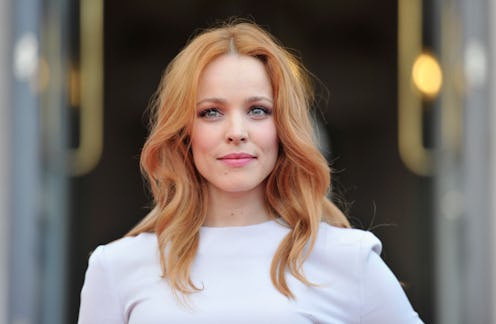Entertainment
Where are the People of Color in 'True Detective'?
Do I love True Detective? Abso-fuckin'-lutely. That being said (I feel like my love of all television is conditional), the first season definitely had a palpable race problem. It was just announced that Rachel McAdams and Taylor Kitsch have been confirmed as second season leads, joining Vince Vaughn, Colin Farrell, and, recently added to the cast, Kelly Reilly. A roster of beautiful white faces... and Vince Vaughn (JK, he's too). Which begs the question: how will True Detective reconcile its race problem in season two, especially now that they'd rounded out their all-white leads?
Before we get any further, I have to say, I think Rachel McAdams is a solid choice. She's very talented, and is long overdue for another successful project that lets her show her promise as an actor. But when tons of names were being thrown into the mix as to who would play Ani Bezzirides, I hoped and prayed that it would be Rosario Dawson, the only woman of color being considered for the role. In the first season of True Detective, there were only two principle black characters represented on the show: Detectives Gilbough and Papania, the current-day officers at the southern Louisiana precinct. Louisiana: the deep south, yet black people are rarely represented in the show's eight episodes. There's also the black woman who is Tuttle's former maid that asks ominously, "You know Carcosa?" When Hart and Cohle visit her for an interview, you see that she lives in a poor area.
Is there a way for showrunner Nic Pizzolatto to redeem the second season of True Detective not just for its female characters but for its characters of color? There are logistical solutions. The landscape of California in the second season would do well to realistically portray the Hispanic population, hopefully not in the expected ways (see: gang imagery). There could be a person of color as a villain, of course, but hopefully in a smart and interesting way that does not play off tired stereotypes. One of the greatest television villains is Gustavo Fring on Breaking Bad, a Chilean drug lord, and yet none of his terrifying character was tokenized.
But the lack of a person of color in one of the five leads is too obvious. We discuss time and again what kind of responsibilities a show creator has to show representation, but if True Detective wants to create a hyper-realistic world, they can't ignore color. It's easy to hope that at least strong secondary characters will be people of color, but we'll have to wait and see when the second season of the HBO show airs in 2015.
In an op-ed for Huffington Post, Kareem Abdul-Jabbar expressed that he actually didn't think that True Detective had a race problem, saying:
True Detective got the racial mix right. The only major African-American characters are the two detectives, Thomas Papania and Maynard Gilbough ... The fact that the landscape in the 1995 part of the story is Alaskan white is meant to portray the dark good-ole-boys Old South history, in which the degenerate, perverse way of thinking led to unspeakable crimes, as manifested in the cult of child molesters and murderers. The black detectives looking to uncover the truth of what really happened represent a New Millennium South that may be flawed from their horrific past, but is on the mend.
Abdul-Jabar went on to point out that the fact that the two black detectives save Cohle and Hart in the end. And as he is a black man, I can't say that his interpretation is wrong; if he doesn't feel like he is being underrepresented on the show, that's great. But I personally want, or rather, need to see more people of color on True Detective season two. Otherwise, I don't know if I can maintain my true love for the series.
Image: Getty
